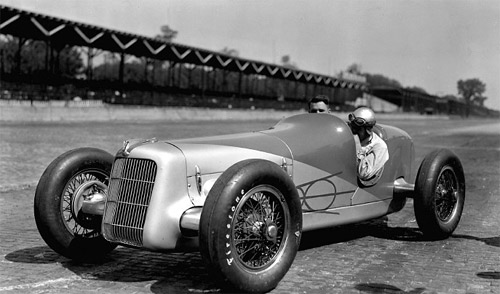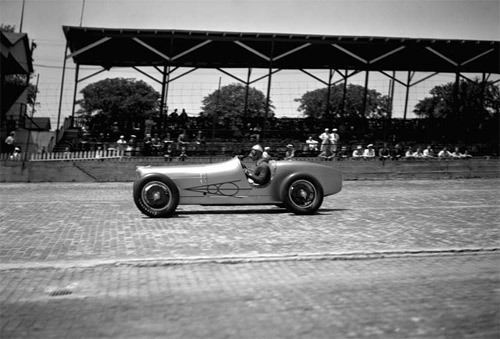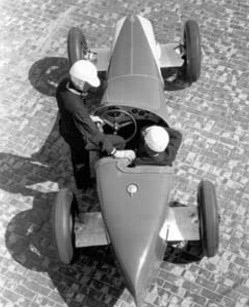1935 Miller/Ford Indy Cars

When you get right down to it, Harry Miller is the most important figure in American racing history. He started meagerly enough – just a small carburetor shop with an incredible staff (Lee Goosen and Fred Offenhauser) and a perfect sense of tune. This sense made the Miller shop a “go to” stop for racers looking for an edge. One such racer tore up his 1917 Peugeot Grand Prix car and handed it over to Miller for repair. It was during this project that Miller had a moment of clarity. Within months Miller and his crew began to design their own engine based off the Peugeot 4-cylinder.
The double overhead cam design with 4-valves per cylinder began a line of racing engines with a heritage and a win sheet that is unmatched to this day. During the depression, Miller went bankrupt and sold the shop to Offenhauser. Fred kept the torch lit and continued building the engines under the Offy banner. In the 1950’s and 60’s, it’s estimated that the Miller derived Offy won over 80% of every race it was ever entered. This domination continued on the circle tracks of America well into the 1970’s. In fact, it wasn’t until 1981 that an Indy 500 start did not feature a car with either a motor or a chassis with a Miller on its family tree.
Even so, Miller was not without his failures and one of the most famous was the 1935 Miller Ford project. Henry Ford wanted to go racing in a bad way and contacted the ever colorful Preston Tucker to get his program going. With only months until the 1935 Indy 500, Preston and Henry hired Harry Miller to build a number of race cars to compete. Ten cars were built in total, but only a few made the May deadline.

The cars were as beautiful as they were mechanically advanced. Each featured front wheel drive, reverse mounted 21-stud Flathead Fords, and four wheel independent suspensions – all were firsts in an Indy field. However, it was the low slung chassis and aerodynamic styling that really made a statement. Never had a more graceful or simply beautiful race car been built in America.

Sadly though, this is a story of failure and not success. With such a tight deadline to get the cars ready, Miller had no time to test and tune the cars before fielding them at Indianapolis. Each showed well during qualifications, but a steering box mounted too close to the hot running flatheads caused catastrophic failure and each car entered ended the day with a DNF.
Horrified and embarrassed by the experience, Henry Ford kept his company out of racing for almost 30 years afterwards. Broke and ashamed, Harry Miller sold his shop. Both Ford and Miller would see better days in different ways.
Restored photos from the guys at milleroffy.com:
Editor’s Note: This is self serving, but… In late May or early June (how fitting is that time frame?), Marcie and I will be having a baby boy. His name will be Miller. While we aren’t naming him after Harry (it’s actually a family name), I have been looking for images and art featuring the Miller logo or shop front to hang on his walls. I haven’t had much luck… If you guys see anything, speak up and send me a link!








